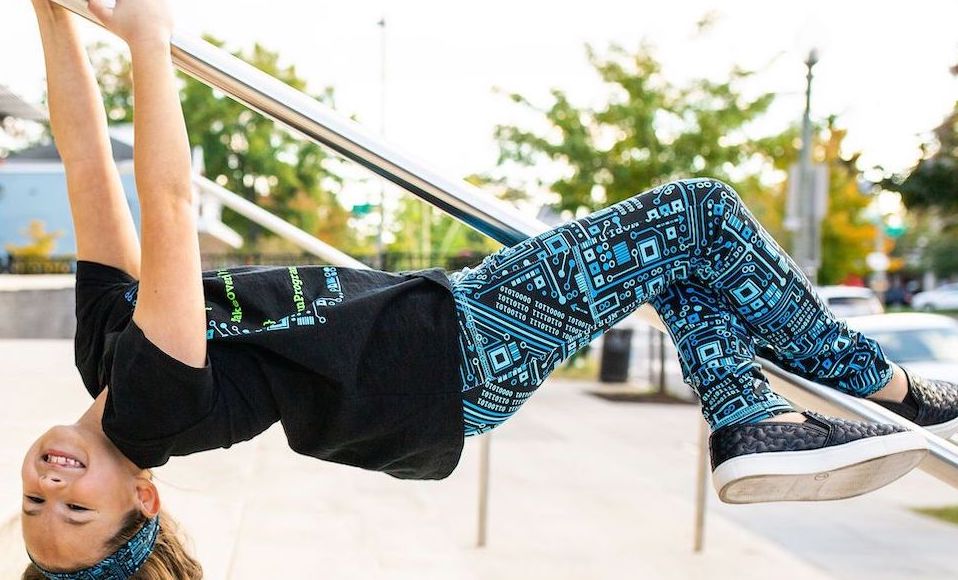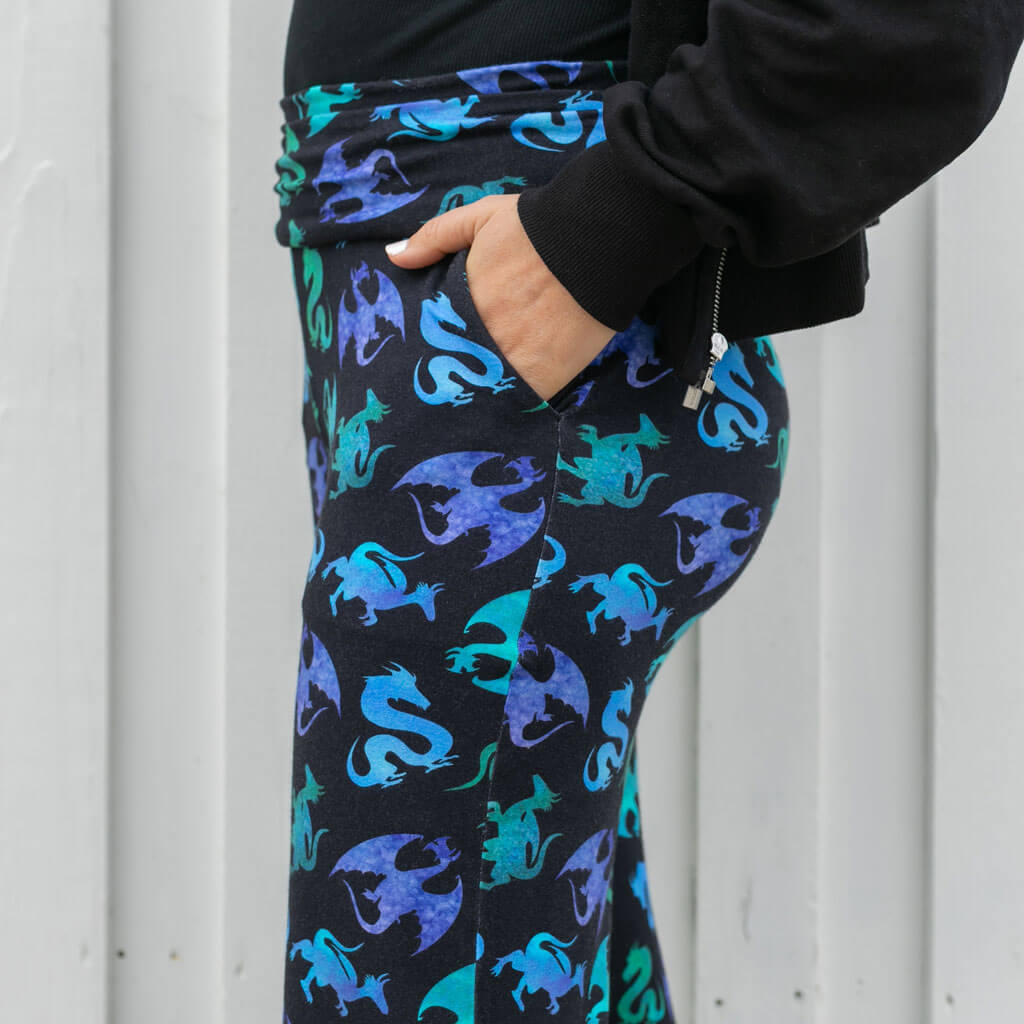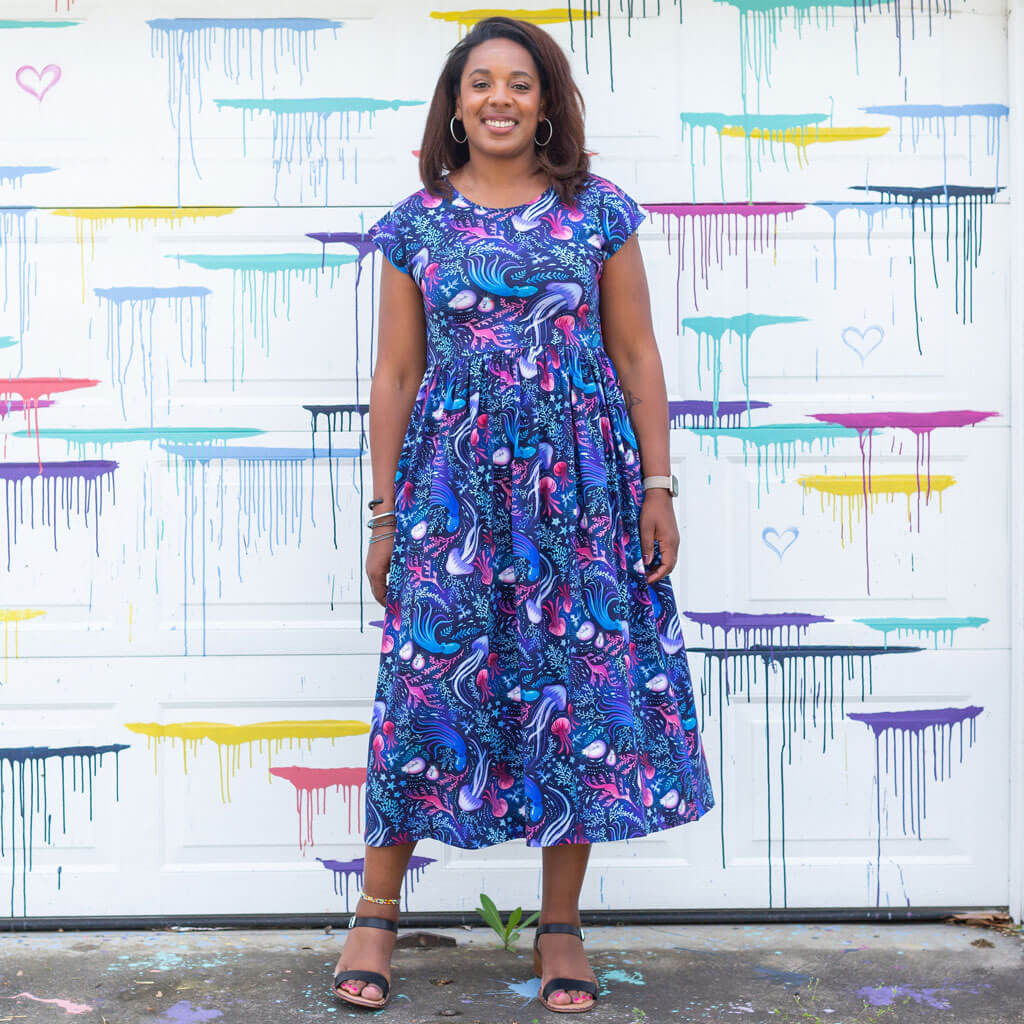Shop Now
New
Sale

Ok Google - why are your product category codes sexist?
September 25, 2019 6 min read 10 Comments
I was hard at work setting up our Google Product Feed, which is how we - a small business e-commerce merchant - tell the behemoth that is Google what we sell so that Google can run ads for our products. Once I had finished putting the basics in place (name of product, price, URL, etc), I began working through Google's Product Category requirement.

We make clothes that reflect the wide range of girls' interests - dresses and leggings with helicopters, for example
The Product Category Code tells Google what we are selling. We don't get to describe what we sell to Google. Google gives us a list of product category codes and we must choose one (and only one) that describes our product. If we don't choose one, then Google will assign the product a code.
Google says that the product category code is optional - but it isn't. It's optional in the sense that the merchant can assign it themselves. But the product is going to get a code whether we assign it one or not. And here is why the product category code really, really matters:
"In Google Ads, bidding on Shopping campaigns is based on the latest categories."
-from Google Merchant Center help
Google Shopping ads rely on the product category code to decide what the product is - and therefore who should see the product and how much the merchant is going to pay Google to place an ad for it in front of that person.
If the code for the product we are selling is not available, there is no way for us to explain what the product is and who should be seeing the ad. This wastes our money by putting ads in front of people who don't need to see them. And it keeps us from getting seen by the people who do want to find us.
So, as I was assigning product category codes to our Princess Awesome products, I found out right away that we were going to have trouble running ads. I could not tell Google specifically what we were selling because the correct categories for our products do not exist within their schema.
1. Dresses

The majority of the products we make are play dresses for girls in sizes 2T-16.
There are exactly three specific kinds of dresses in the entire world, according to Google: Wedding/Bridal Dresses, First Communion & Baptismal Dresses, and Activewear "Dance" Dresses.

I can think of many occasions other than religious ceremonies, weddings, and dance competitions in which wearing a dress may be a person's preference. In fact I can think of several kinds of other dresses that may be worn to those three occasions. And none of them are listed here, not by occasion, not by style, not by wearer.
2. Leggings

For those of you, like Google, who have never heard of leggings, they are a type of pants worn primarily by women and girls. They are usually made of a stretchy polyester-cotton fabric blend, similar to tights but opaque so that they can be worn as pants. Google has no product category code for them:

3. Children's Clothing
Our customers, of course, are adults, but most of them are buying for a group of people known as "children." Children are generally considered to be people between the ages of 5 years old and 12 years old. Google does not recognize "children" as clothing buyers, as there is no product category code aimed at them. The closest we can get is "Baby & Toddler:"

I can imagine that the reasoning behind omitting a separate category of "children's" clothing is that it would essentially double the number of category codes, since there would be so much overlap between adult clothes and children's clothes. I understand that, generally speaking, a skirt is a skirt regardless of whether an adult or a child is wearing it - except that children's clothing is designed to be worn by children. It has a different cut and different sizing than adult clothing, or even Juniors clothing (aimed primarily at teenagers). Acknowledging the difference between adult and child clothing would make Google's clothing search results much more accurate.
But instead of handling the difference within the product category code schema, Google tries to sort children's products from adult products by requiring an age group and gender specification. We can tag things as "newborn," "infant," "kids," "toddler," or "adult", and we can specify "male," "unisex," or "female." We are not allowed to specify multiple age groups (or genders). That means I can't tell Google that our dresses are sized 2T-16, meaning they should be tagged "toddler," "kids," and the missing category of "juniors."
Regardless, one would assume that a product tagged "age_group:kids" and "gender:female" would produce accurate search results for us and others marketing to girls 5-12. But that's not what happens. Here are a few basic searches to illustrate why (remember that the results will vary because they're ads and the companies are bidding to show you their product):
- "Alien Costume" - mostly men with a few sexy women's costumes
- "Alien Costume Boys" - almost entirely boys ages 5-12 in alien costumes
- "Alien Costume Men" - all but one adult men's alien costume
- "Alien Costume Women" - all adult women's alien costumes (mostly sexy)
- "Alien Costume Girls" - less than half girls under 12 in alien costumes. About half sexy women's costumes, some costumes neither alien nor girls but women in other sexy costumes.
Google can't tell the difference between women and girls. Try a few other searches and you will see that this is true regardless of the product. Searching for products for "girls" usually brings up about half women's or teen's products - products aimed at sexy (or its baby sister "sassy"), attractive white women.
What does this mean for our ability to run ads with Google? It means that we are unable to run ads for products that are unique to us and that our customers really, really want to find - our children's dresses and leggings with choo-choo trains on them, for example - because if we try to run an ad for "girls trains dress," they show up right smack in the middle of ads for women's dresses with very long trailing skirts (also known as "trains").
It means that if you search for "trucks dress," Google Shopping will show you a bizarre collection of costumes, truck toys, women's dresses that don't have trucks on them, and most weirdly of all, a spare part for a truck called a "dress plate."

They've managed to sprinkle a few actual girls' dresses with trucks on them into the results, but the results are not accurate. Trucks dresses should all be at the top of the search results. Those other products either should not show up at all or should at least be shown below actual dresses with trucks on them. It is a waste of money for the advertiser who is paying to get a spare part for a truck plate on Google Shopping, not to mention extremely annoying for the person who is looking for a small child's "trucks dress."
At first, I gave poor Google the benefit of the doubt for these mismatches. It must be so difficult and time-consuming for them, even with 100,000 employees, to devote the time and human brainpower it would take to create a schema that correctly categorizes most merchants' apparel products so that Google could run accurate, cost-effective ads to the audiences those merchants want to reach.
And then I discovered this:

You are reading that correctly. Google has a product category code for PETTICOATS. Petticoats - but not leggings. Petticoats are an undergarment (a heavy skirt worn under a dress or skirt) that have not been part of mainstream American women's fashion since the 1920s.
And even more irritating is this:

There are two product category codes just for products worn exclusively while playing football, ONE OF WHICH IS FOOTBALL PANTS, in addition to the 11 other pieces of wearable football gear listed under Sporting Goods.
Not surprisingly, Google knows exactly what to show you when you ask it for "football pants:"

This sexism in the accuracy of categorizing products used primarily by women and children (the majority of whose products are purchased by women) harms both the consumer and the merchant.
We, the merchant, are paying money for ads that are less accurate and deliver to the wrong audiences. It pointlessly wastes our money and depletes our marketing budget. But worse, it puts our business at a disadvantage compared to businesses that sell products aimed at male customers. And it means that consumers have a more difficult time locating and purchasing products that are designed for women and children.
The net effect is market distortion. Being a small business owner and not an academic researcher, I don't have the time or resources to study this phenomenon scientifically. But I hypothesize that men's products perform better on Google Shopping and similar platforms such as Bing Ads because they are better categorized, and therefore easier to find. If that's the case, then businesses selling to men are running ads that perform more accurately than comparable product ads aimed at women. Better ad delivery means those businesses bring in more money than businesses selling to women, so that male-centered businesses have higher revenues and thus larger marketing budgets and can therefore buy even more ad space and continue to outperform their female-based counterparts. Academic researchers, let me know if I'm right.
For now, my small business, dedicated to fighting sexism, will continue to serve the women and children who want and need our products, despite the obstacles - overt and programmed into our daily lives - that limit our reach.
10 Responses
Alex G
August 14, 2020
Thank you for this! I was just running into exactly the same problem for my small business (Unisex clothing ages 0-12Y). I thought I must be doing something wrong. I wish that had been the case!
Jennie
October 08, 2019
This was a fascinating post. I have long been interested in how we classify “boys” and “girls” and this just confirms my suspicion that there’s no real category for actual girls in the way there is for boys. I’m pretty sure if you asked a hundred people to classify “girls” by age you’d get a very different answer from “boys” by age.
Btw, I think petticoats is affiliated with sex related topics, hence the category. You can also go to “men’s petticoats” and get exactly that (don’t ask me!). That said, when I put “girls’ leggings” into Google search I pretty much get that. But that’s different from ad categories. I get that.
Julianne
September 26, 2019
I was also wondering how we could help promote change at Google (I’ve encountered these issues before with Google searches, but never understood why). Would gladly sign a petition/ write a letter/ etc.
Jodi
September 26, 2019
It might be time for new women reinvented google and YouTube – it’s been way too long getting worse and worse.
Nicole
September 26, 2019
Is there a way to contact google enmass about this to force them to change and add more categories for women? Have you contacted any news organizations about this?
LaDawn
September 26, 2019
It may be that “petticoat” in this instance is the British equivalent of the American “slip.” In either case, clearly Google needs new categories. Online petition, anyone?
Leila
September 26, 2019
What happens when not enough women are involved in technology field.
Google — obviously designed by men.
Kathy
September 25, 2019
How ludicrous that petticoats and computers (and Google) didn’t even exist at the same time – off by what, 90 years?!! Sheesh!!!
Pam Kohel
September 25, 2019
Google obviously needs to change their coding. Get your customers to write to Google and let them know that their coding shows gender bias.
Leave a comment
Comments will be approved before showing up.
Subscribe
Sign up to get the latest on sales, new releases and more …






Slum
March 02, 2021
I came across your article because I was trying to find out what category Google would like leggings to be listed under. I am a man, please don’t hold it against me!! I totally agree with you about Google. Definitely a sexist company but also incompetent. They banned my site for “misrepresentation”. When I asked what the mean by that they couldn’t give me an answer!!! Unbelievable. I just go through Facebook and one or two others now. I’ve had enough of Google. Way too much power in the hands of fools. Your blog was from 18 months ago and still they have no category for leggings. Idiots. Anyway, cool site!